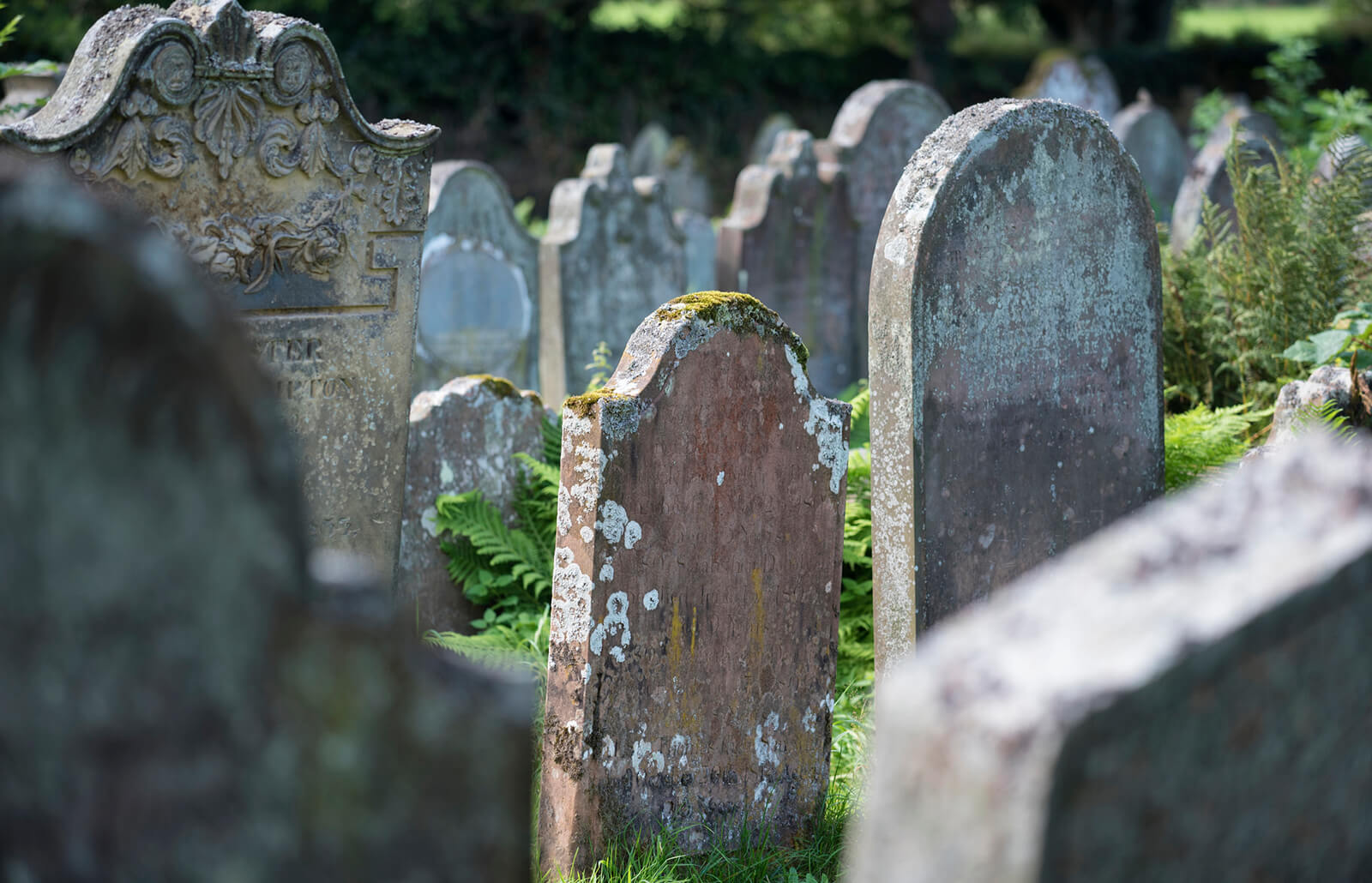
How to Clean a Gravestone – Cemetery Preservation
(Originally published in February 2013, this article is still full of valuable tips to bear in mind—before you go to the cemetery!)
In April 2012, I posted an article about cemetery research resources. This fall, as I visited cemeteries in both Massachusetts and Virginia, I was reminded how much I enjoy walking their paths, surveying the gravestones, and gleaning family information where I can. As I walked in a Virginia cemetery with a friend, she related a story of how, some years ago, the women of the church, concerned that many of the stones had become difficult to read or looked dingy, washed and scrubbed each of them with bleach. While the cemetery apparently looked wonderful after its cleaning, it is now noticeable that the polish on the many marble stones has been completely destroyed. (Any gravestone preservationist reading this anecdote has just suffered a metaphorical heart attack!)
Despite the cold weather and perhaps snowy conditions many of us are now experiencing, spring is coming, bringing with it weather more conductive to cemetery visits. So. here are some topics to consider both as you plan a cemetery visit, and while you are in the cemetery itself. (By the way, Google™ defines a gravestone as “an inscribed headstone marking a grave” and a tombstone as a “large flat inscribed stone standing or laid over a grave. Please note that in this article, I have chosen to use only the term “gravestone.”)
First, do your homework prior to arriving at the cemetery.
- Purchase (or borrow from your local library) a copy of Lynette Strangstadd’s A Graveyard Preservation Primer (AltaMira Press, 1995) and read it to become familiar with issues surrounding the care and preservation of gravestones.
- While you are noting the cemetery’s address and hours, also identify the individual owner or the organization responsible for the cemetery, as you may need to contact them in order to gain access or to receive permission to clean a particular stone or even to photograph it.
- Gravestone rubbings have long been popular among family researchers, and you will find instructions in many locations on the Internet. However, you will want to determine if there are any laws in effect governing your ability to do so. These laws have been enacted at the federal, state, county, and local levels. For example, no stone rubbings are permitted in the national cemeteries operated by the Veterans Administration. At the state level, New Hampshire law states, “No person shall make gravestone rubbings in any municipal cemetery or burial ground without first obtaining the written permission of the town selectmen or the mayor of a city … [who] will ascertain to the best of their ability that the person making the request knows the proper precautions.”1 Michigan has published the Michigan Historic Cemeteries Preservation Guide which recommends against gravestone rubbing, stating that they are “no longer considered an acceptable practice because of the harm and damage that can occur.” The article outlines the concerns posed by this practice, which are worth summarizing:2
- Rubbing paper may tear allowing rubbing wax to come into contact with the surface of the stone itself. The residue of this wax may discolor the stone, interact with acid rain and accelerate the deterioration of the surface.
- The edges of raised artwork and incised letters can be damaged by the pressure of the repetitive rubbing process.
- The pressure of rubbing may exacerbate any previous damage to the stone surface and design elements.
- The adhesive from tape used to hold the rubbing paper on the stone may leave damaging residue.
Create a “cemetery kit” to carry in your car. This kit should include at least some of the following:
- Gardening gloves; hat; umbrella; bug repellant; sun screen; water or drinks, etc. (These items are to help preserve you!)
- Brush and grass clippers; white nylon bristle-white handle brushes; white, non-lint cloths. Do not use wire or natural-bristle brushes, or those with colored bristles.
- Bottled water and a non-ionic detergent such as Orvus Quilt Soap or Photo-Flo. The former is a PH-neutral solution that, strangely enough, is used to wash horses, but is also endorsed as a cleaning product for everything from gravestones to heirloom quilts. It can be purchased at many tack stores or seed and feed outlets. The latter is a solution, in what again appears to be a strange pairing, often recommended for cleaning photographic equipment as well as grave stones. Photo-Flo decreases water-surface tension, minimizes water marks and streaks, and dries uniformly. It can be purchased in camera stores. Do not use bleach or household cleaners.
- Camera; tablet or smart phone containing your genealogical files
- Small mirror – if possible, one the size that you would hang on the back of your closet or bathroom door, but at least 8×10.”
- Notebook and pencils.
Once you are in the cemetery and have identified a stone of interest, and any necessary permission to clean or photograph it, you can do the following, which includes instructions on how to properly clean a gravestone:
- Assess the material out of which the stone was created. Depending on the age of the cemetery and individual plot or stone, these materials may include slate, sandstone, limestone, marble, granite, (and more recently bronze). Each of these types of stones has a different density or hardness measured by the Mohs hardness scale, ranging from limestone and sandstone as the softest and granite as the hardest.
- Assess the condition of the stone.
- If it is flaking or sounds hollow when you rap it with your knuckles, do not attempt cleaning to prevent further damage.
- Is it covered with dirt, dust, lichen, mold, fungus, or other such growth? If so, wet the entire stone evenly and then clean the stone in a light circular motion with a soft cloth. Use one of your brushes (gently) if growth or dirt needs to be removed from incisions or lines of artwork detail. Rinse well. While it may seem self-evident, do not use a power washer.
- In your notebook (or on your tablet) note the location of the grave in the cemetery (street/avenue/path name, as well as row and stone number). In addition to the information on the stone, make notations of the cleaning efforts you have undertaken, including the date, as it is not recommended that cleaning be repeated more frequently than every ten years.
- Photography is the best alternative to gravestone rubbing. Take several pictures of the stone, both close-up images and longer-range shots which establish the location of the stone in relation to its larger setting. If the surface incisions are difficult to discern, use the mirror in your cemetery kit. The mirror will help create shadows on the face of the stone, or conversely may direct sunlight onto the face of the stone, thus enhancing picture clarity. Do not use chalk to fill in the letters and numbers in order to make them more readable. Chalk contains materials such as plaster of Paris, which is non-biodegradable and can cause discoloration or further damage if not rinsed completely. Do not use shaving cream. This compound contains stearic acid which when applied can act like concentrated acid rain and cause significant damage to the stone. In addition to your stone photographs, also make sure that you have taken a picture of the entrance to the cemetery itself in order to document the location.
Further information is available online, including the following:
1New Hampshire, Statutes, Title XXVI, Section 289.22.
2 Gregg G. King, et.al., Michigan Historic Cemeteries Preservation Guide (Saline, Mich.: McNaughton & Gunn, 2004), 150-151.
Image credit: Gravestone of Deborah (Fearing) Leavitt (d. 1789), wife of Joshua Leavitt, Hingham Center Cemetery, Hingham, Massachusetts. By Timothy Valentine [CC BY-SA 2.0 (http://creativecommons.org/licenses/by-sa/2.0)], via Wikimedia Commons


